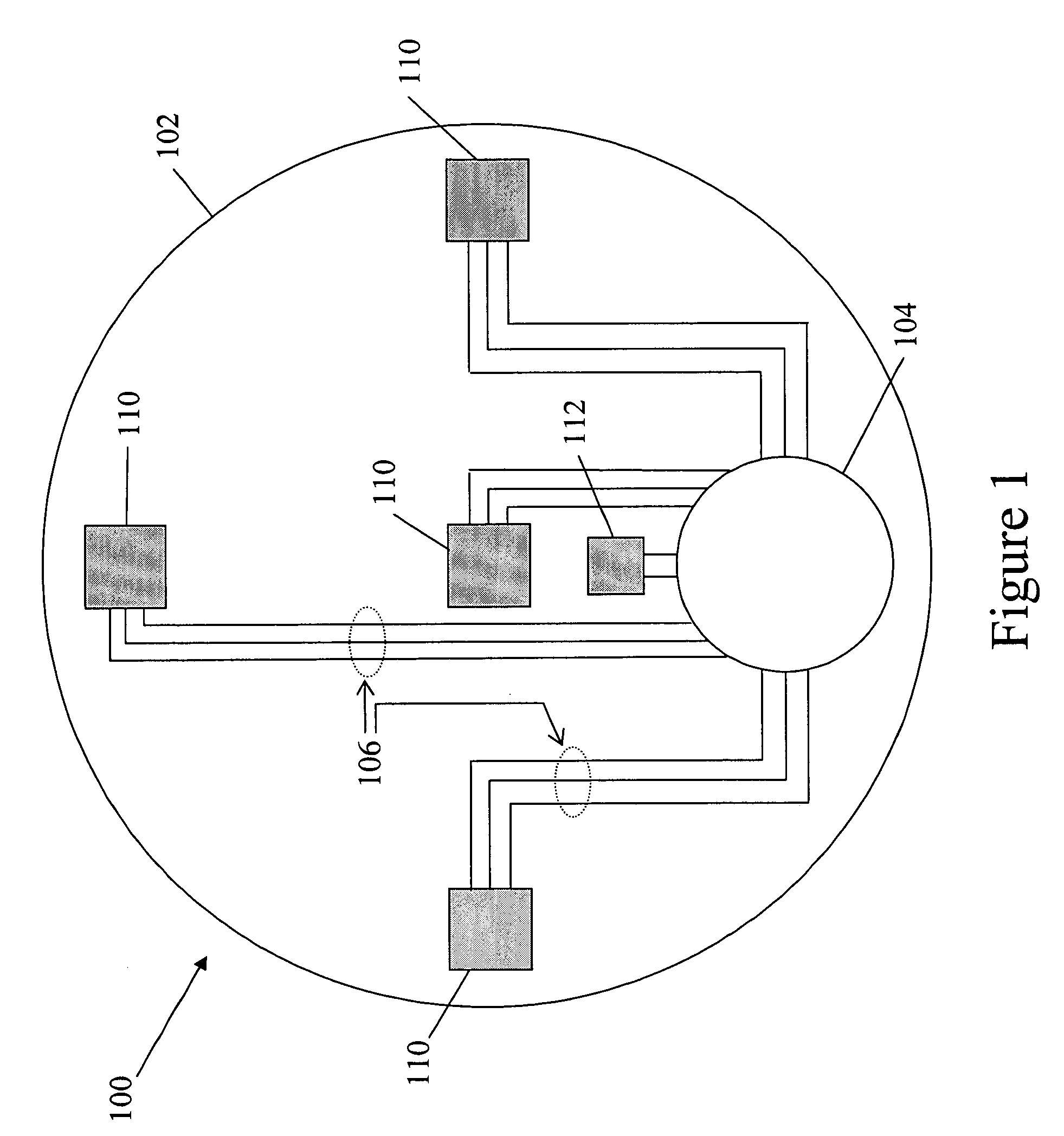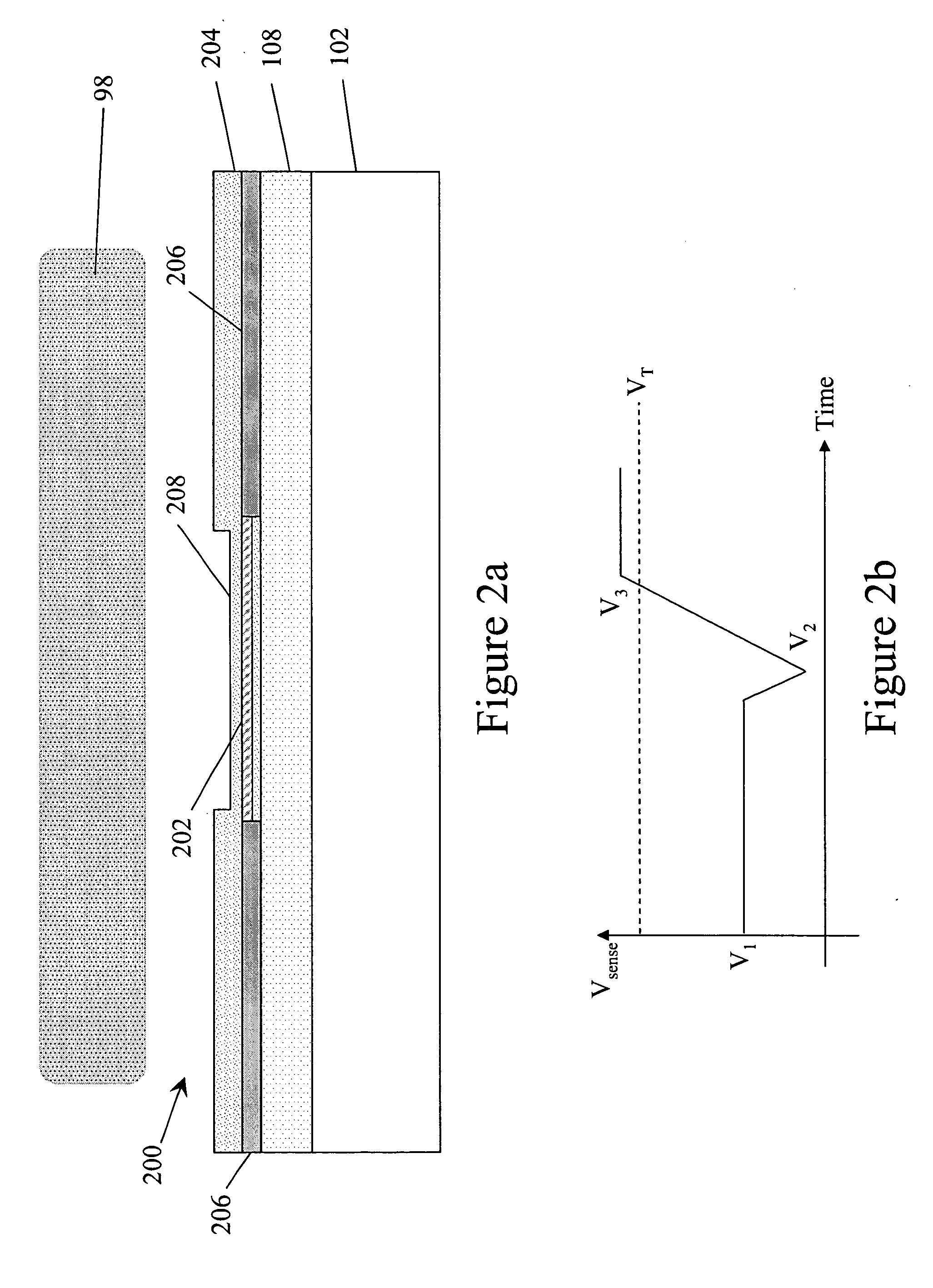Diagnostic plasma sensors for endpoint and end-of-life detection
- Summary
- Abstract
- Description
- Claims
- Application Information
AI Technical Summary
Benefits of technology
Problems solved by technology
Method used
Image
Examples
Embodiment Construction
[0018]FIG. 1 illustrates a wafer-based plasma probe in accordance with one embodiment of the invention. Sensor probe 100 comprises a 200 mm or 300 mm silicon wafer primary substrate 102 having physical and electrical properties standard to typical semiconductor starting material. Probe 100 further comprises data sensors 110 for measurement of plasma or surface properties. Data sensors may include, for example, Langmuir probe sensors for measuring plasma ion currents and / or electron temperatures; electrostatic charge sensors; ion property sensors for measuring ion flux, energy distributions, or incidence angles; surface temperature sensors such as thermistors, thermocouples, or temperature diodes; optical sensors for measuring plasma optical emission spectroscopy or particle light scattering, or for absorption spectroscopy; surface acoustic wave sensors for measuring pressure, film thickness and deposition rates; or micro-electromechanical systems for tactile chemical sensing, mass s...
PUM
 Login to View More
Login to View More Abstract
Description
Claims
Application Information
 Login to View More
Login to View More - R&D
- Intellectual Property
- Life Sciences
- Materials
- Tech Scout
- Unparalleled Data Quality
- Higher Quality Content
- 60% Fewer Hallucinations
Browse by: Latest US Patents, China's latest patents, Technical Efficacy Thesaurus, Application Domain, Technology Topic, Popular Technical Reports.
© 2025 PatSnap. All rights reserved.Legal|Privacy policy|Modern Slavery Act Transparency Statement|Sitemap|About US| Contact US: help@patsnap.com



